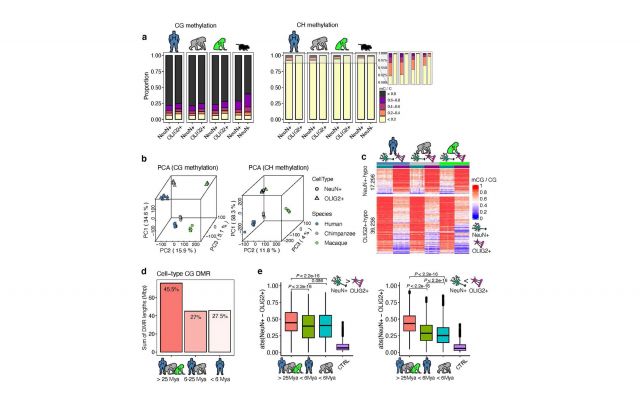Comparative Neurogenomics & Epigenomics
The human brain is a fascinating example with numerous occurrences of evolutionary innovation at multiple levels: the unprecedented expansion of its size, the histological and structural remodeling, the molecular level changes such as gene and protein expression profiles. How did human brains achieve such dramatic evolutionary changes in a relatively short geological time is a long-standing question for many evolutionary biologists. In addition, it is becoming clear that some human specific phenotypic traits and disorders can be better understood by elucidating their evolutionary origins. We study the genomic and epigenomic modifications of human brains during evolution, and how they impacted specific traits and regulatory modules in brains. We recently completed a study of DNA methylation changes along human brain evolution. We are also interested in how epigenetic marks regulate and/or propagate traits such as cognition, neuropsychiatric disorder, and plasticity of human brains. Our current research includes epigenetic analysis of brains from schizophrenia patients.
We also utilize naturally occurring variation of molecular and phenotypic traits of primate brains to understand principles of brain development and evolution. Primate brains represent a compelling example of co-evolution between brain size and life history traits. Primate brain sizes vary dramatically among species (see the Figure of primate brains). There are robust relationships between phenotypic traits of primate brains and cognition, lifespan, gestation length, time to maturity, and other life history traits. The strong co-variation in size, pace of development, coupled with brain plasticity allow each species to adapt to a variety of social and ecological environments. As such, adult primate brains may reflect an accumulated ‘record’ of genome-environment interaction throughout the life history of individuals that is shaped by species-specific evolutionary adaptations. To understand these interactions, we use genomic and epigenomic methods to study primate brains.


